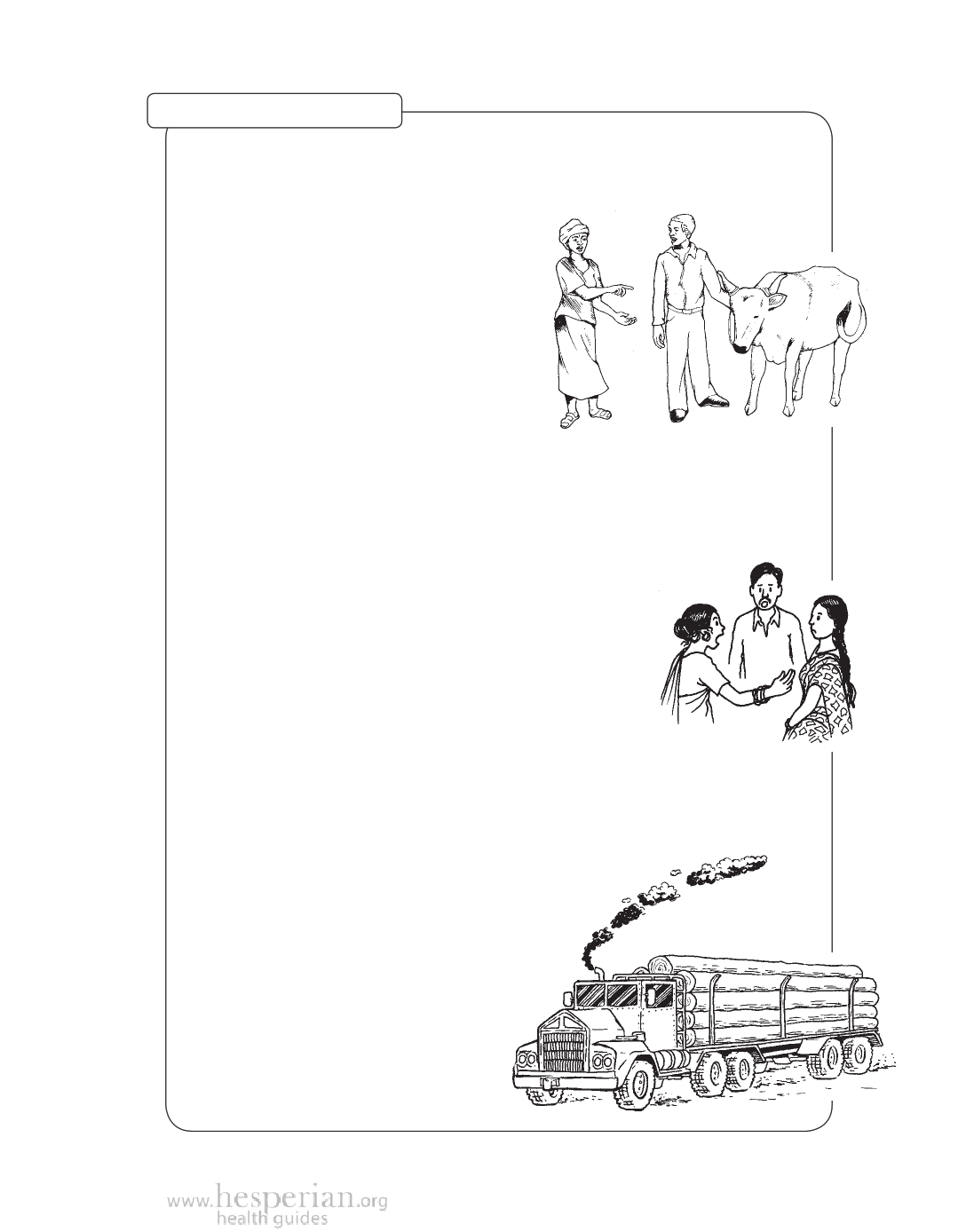
Sociodramas (continued)
Forest Conflicts 187
Choose some of the stories below to make sociodramas about forest conflicts.
Or make up sociodramas based on real conflicts in your community.
Situation 1. Characters: man with cattle;
herbal medicine collectors; community
meeting participants.
After years away from the community, a man
returns with 10 head of cattle and begins to
graze them on community forest land. When
other community members go to the forest
to collect medicines and thatch, they find that
the cattle have eaten so much there is little
left for them. They call a meeting to discuss
the problem. The man with the cattle insists he has a right to graze his cattle, no
matter how much they eat. Others in the community disagree. What happens next?
Situation 2. Characters: young men cutting trees; government workers; women
collecting firewood.
Several young men are cutting down trees on communal land
without permission, and selling the lumber to local government
workers, who take the lumber away on a truck. A woman goes
to the place where she usually collects firewood and finds
the young men cutting down trees. One of the men is her
son. She returns to the community and tells the mothers of
the other young men. The next day, the women go to the
forest to tell the young men to stop cutting down trees. The
first woman’s son says he needs the money from selling trees
to buy medicine for his baby daughter, her granddaughter.
What happens next?
Situation 3. Characters: community members with axes and oxen; government
men with chainsaws and trucks; village council officials.
For generations, people cut down trees using axes and
hauled them out with oxen. Now, men from the local
government have been coming with chainsaws,
cutting down trees and saying the forest is
state property. One day the government
men show up with bulldozers and
heavy equipment. They want to build
a road into the forest to take out the
biggest trees. A group of men from
the community goes to the forest to
confront them. What happens next?
A Community Guide to Environmental Health 2012